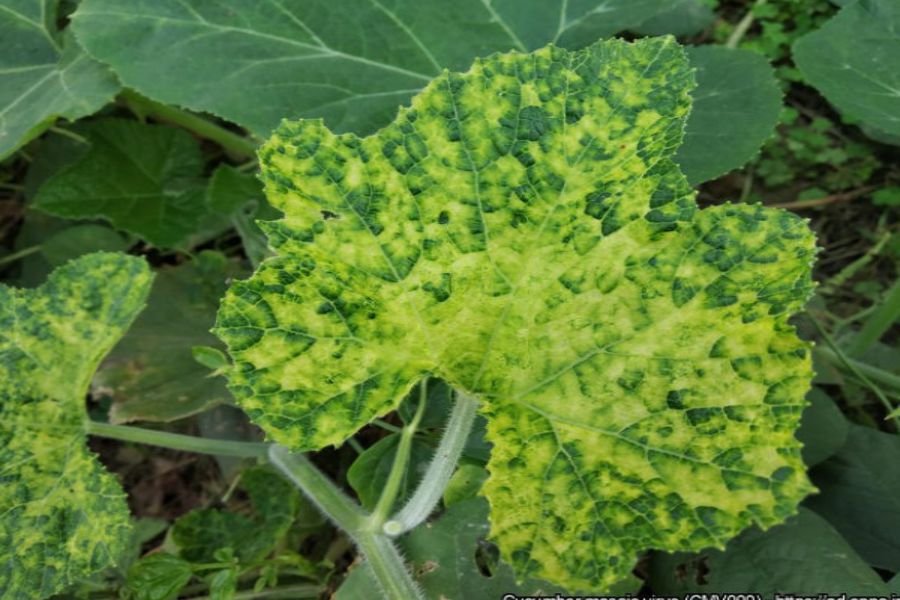Viral Disease: CMV is a plant virus spread primarily by aphids, though it can also be transmitted through seeds and mechanical means.
Wide Host Range: While it’s most commonly found in cucumbers and tomatoes, CMV can affect over 1, 200 species of plants, making it a significant threat to many crops.
Symptoms of CMV :
Mottled Leaves: One of the first signs of CMV is yellow or light green mottling on leaves. This can spread to larger areas, affecting the plant\\'s ability to photosynthesize.
Stunted Growth: Infected plants often show signs of stunted or reduced growth, with fewer and smaller fruits.
Deformed Fruit: Fruits may appear distorted, smaller, and less flavorful, leading to a significant reduction in yield.
How CMV Spreads ?
Aphid Transmission: Aphids are the primary vectors of CMV. They spread the virus when they feed on infected plants and then move to healthy plants.
Mechanical Transmission: The virus can also spread through contaminated tools, hands, and equipment, especially when working with infected plants.
Management and Prevention :
Aphid Control: Reduce aphid populations by using natural predators like ladybugs or by applying insecticides when necessary.
Resistant Varieties: Plant virus-resistant varieties of susceptible crops such as tomatoes and cucumbers to reduce the impact of CMV.
Crop Rotation: Rotate crops to minimize the chance of virus buildup in the soil and reduce the likelihood of aphid infestation.
Sanitation Practices: Regularly clean tools and equipment to avoid mechanical transmission of the virus between plants.
Remove Infected Plants: Remove and destroy infected plants promptly to prevent the spread of CMV to healthy plants.
